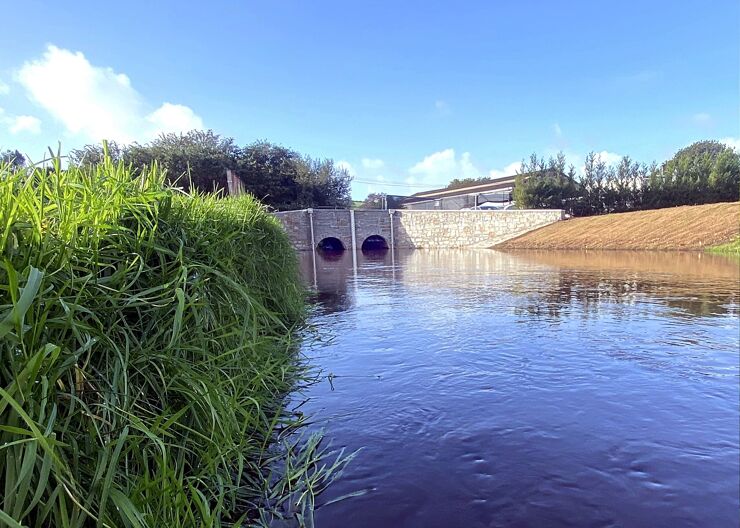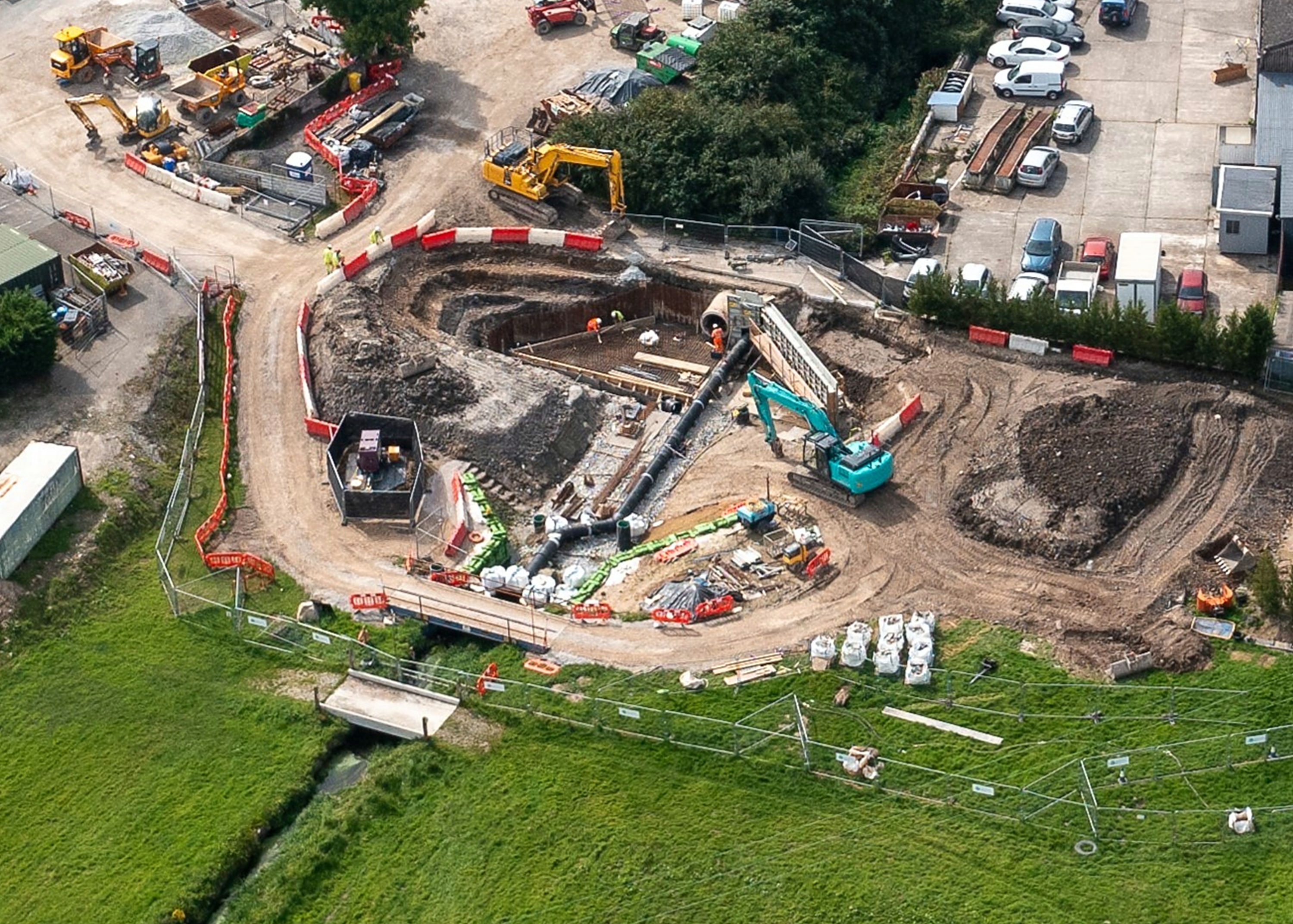
England’s Environment Agency has used NEC to decommission an unsafe flood storage reservoir in Cornwall. The £3 million project was procured through the Environment Agency’s NEC-based collaborative delivery framework using an NEC4 Engineering and Construction Contract (ECC) Option C (target contract with activity schedule) in May 2020.
Kier was appointed as the main design and build contractor with AECOM as NEC project manager and Jacobs as NEC supervisor and reservoir construction engineer. Callsafe was the principal designer and Atkins Realis was the client’s designer. Each consultant was engaged under an NEC4 Professional Service Contract (PSC).
The reservoir decommissioning was achieved by removing a culverted earth dam across the Treffry Canal, called Highway Dam. This, together with an adjacent railway embankment, impounded flood water north of the towns of St Blazey and Par. However, the consequences in terms of risk to life of failure of the dam when the reservoir was in use were disproportionate to the benefits of the reduction in flood risk it provided, and newly constructed flood walls downstream meant the reservoir was no longer required.

The work involved removing the dam outlet structure, reprofiling the dam embankment, restoring the Treffry Canal through the embankment via a new masonry headwall and twin culverts, and marginal planting to achieve a 20% biodiversity net gain. Penstocks for the adjacent Treesmill flood storage reservoir were also upgraded and modified.
The project, which was completed on time and budget in October 2023, was shortlisted for the Environmental Project of the Year in the 2024 British Construction Industry Awards.
Continuous communication
Fiona Swan, senior project surveyor and accredited NEC project manager with AECOM, worked both as project manager and cost manager on the Highway Dam project. ‘Having viewed the NEC contract from two sides, I genuinely believe it facilitated and aided relationship management by supporting continuous communication.’
She says NEC early warnings were vital to the success of the project. ‘The use of early warnings was critical in mitigating risk and resolving issues when they occurred. There were 84 early warnings in total.’
Swan says the NEC requirement to monitor the programme regularly was also important. ‘This, together with the inclusion of preliminary costs within compensation events, meant there were no surprises at the end of the contract.’
She adds that the project team fully embraced the NEC requirement to act in a ‘sprit of mutual trust and co-operation’. ‘Highway Dam was a particularly collaborative project, with the whole team working together to build supportive and inclusive relationships. We also used the client’s FastDraft contract administration tool to help make communications more efficient for all parties.’
Swan concludes, ‘All project outcomes are measured in terms of programme, cost and quality. NEC facilitates all these elements, which it why it is my preferred contract suite.’
Benefits of using NEC
- NEC early warnings were critical in mitigating risk and resolving issues when they occurred.
- NEC requirement to monitor the programme regularly and the inclusion of preliminary costs within compensation events meant there were no surprises at the end of the contract.
- NEC requirement to act in a ‘sprit of mutual trust and co-operation’ resulted in the whole team working together to build supportive and inclusive relationships.




